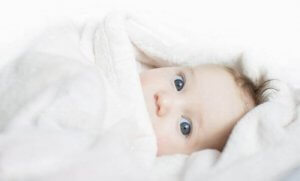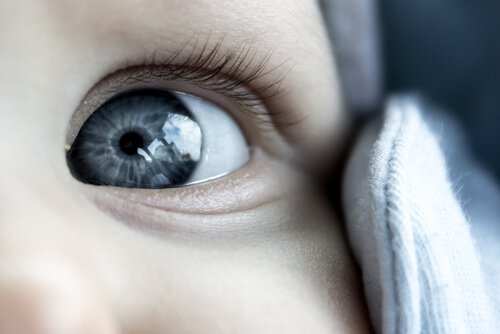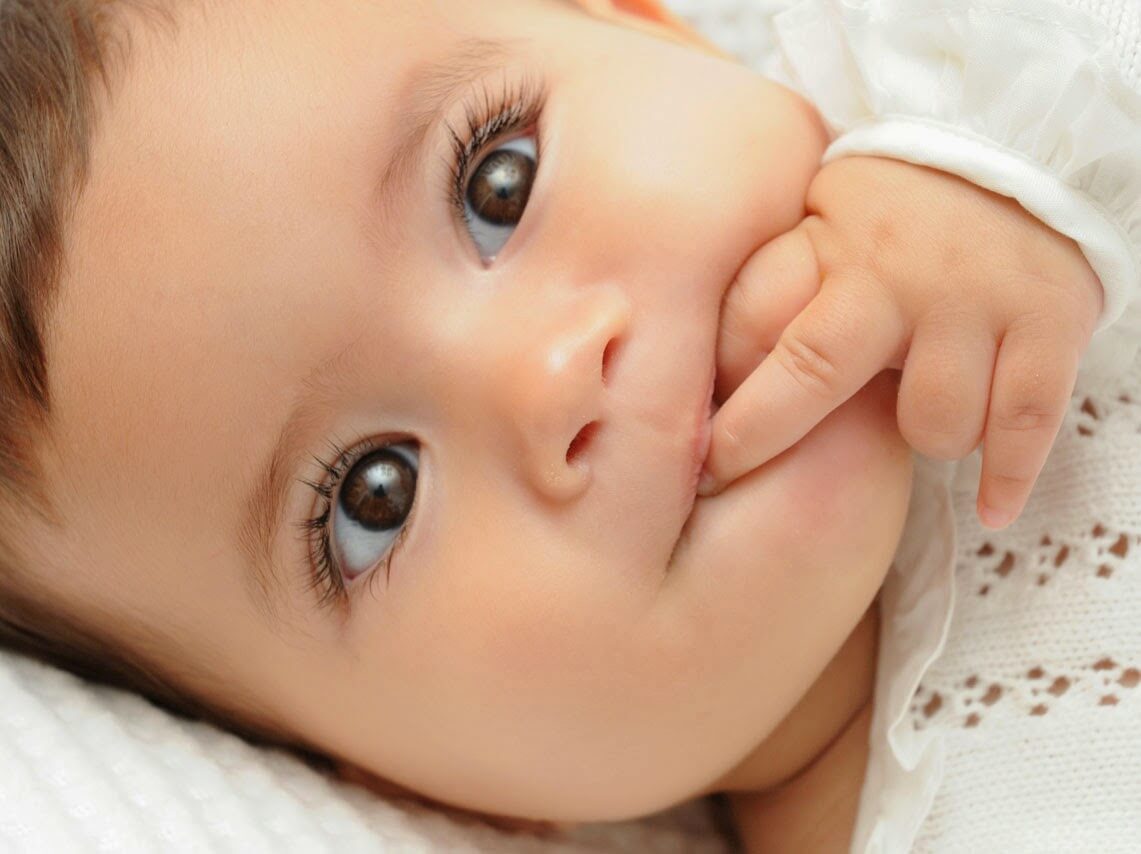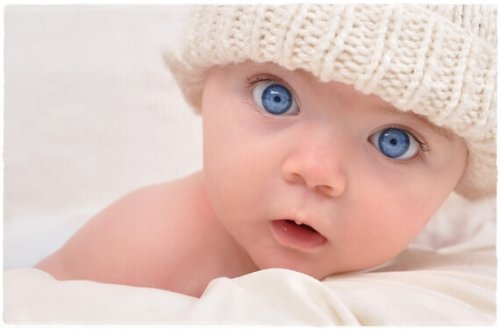What Determines a Babies' Eye Color?

A baby’s eye color can create high expectations in their parents. Most babies, after they’re born, have grey eyes, and with time, they’ll change until they set on a tone. Why does this happen? Why do they change color?
The genetic load that babies get from their parents will help determine their eye color. Sometimes, genetics can go way back and use genetic material from their oldest ancestors.

Just after giving birth, mothers check their babies’ eyes, count their fingers, kiss their face and hug them tightly. It’s a very emotional moment for new moms, discovering their babies’ features and creating an amazing connection with them. Little by little, babies will start to grow and their features will take form, including their eye color.
What determines a baby’s eye color?
The iris is the colored part of the eye and melanin is the substance that defines it. It’s what happens with our hair and skin. For babies, their melanocytes aren’t fully formed and, as babies grow, this will also grow and accomplish their duties.
After exposing babies to sunlight, their melanocytes will activate and thus begins the iris pigmentation process. This will reach its definitive color in about six months of age. This is when their genetic heritage shows.
In some children, their eye color won’t set until after their second birthday. Their skin tone and genetic heritage will help give an idea and influence what they will look like.
The genetic heritage
Usually, children’s eye color depends on their parents’ genes. The dominant gene has a higher chance to show than its recessive counterpart. It’s doesn’t matter if it’s from the mother or the father – both contribute with half of their genetic data.
Regarding eye color, darker colors are dominant genes. Therefore, light colors are recessive, and even if both parents have light eyes, it’s always going to matter what their grandparents’ eyes looked like. Also, skin tone and ethnic background will influence a baby’s eye color.

Is hair color also hereditary?
Similarly to the eyes, hair color is connected to genetic heritage. If parents have dark hair, their child will probably have it too. Although, usually, babies are born with a lighter tone of hair color, and then it darkens. This happens because:
- Melanin and melanocytes are still underdeveloped. As time goes by, melanin will be able to change their current color. It may be darker or lighter, depending on the baby.
- As the baby grows old, oil glands will increase oil production and this will make their hair darker.
The most important thing about your baby’s eye color is that they’re born healthy. For this, you need to keep them protected and clean. Physiological saline solution and sterile gauze pads are great to clean their eyes, to keep them from getting infected.

To families around the world, their baby’s eye color, hair, and skin are very important because it’s part of their family heritage. It’s something that will distinguish them from other people. However, sometimes genetics can be playful and mysterious.
The excitement and expectations of finding out your baby’s features, even if they’re not what you expected, are two of the greatest experiences you live when becoming a parent. Seeing yourself in your child can be a wonderful experience.
A baby’s eye color can create high expectations in their parents. Most babies, after they’re born, have grey eyes, and with time, they’ll change until they set on a tone. Why does this happen? Why do they change color?
The genetic load that babies get from their parents will help determine their eye color. Sometimes, genetics can go way back and use genetic material from their oldest ancestors.

Just after giving birth, mothers check their babies’ eyes, count their fingers, kiss their face and hug them tightly. It’s a very emotional moment for new moms, discovering their babies’ features and creating an amazing connection with them. Little by little, babies will start to grow and their features will take form, including their eye color.
What determines a baby’s eye color?
The iris is the colored part of the eye and melanin is the substance that defines it. It’s what happens with our hair and skin. For babies, their melanocytes aren’t fully formed and, as babies grow, this will also grow and accomplish their duties.
After exposing babies to sunlight, their melanocytes will activate and thus begins the iris pigmentation process. This will reach its definitive color in about six months of age. This is when their genetic heritage shows.
In some children, their eye color won’t set until after their second birthday. Their skin tone and genetic heritage will help give an idea and influence what they will look like.
The genetic heritage
Usually, children’s eye color depends on their parents’ genes. The dominant gene has a higher chance to show than its recessive counterpart. It’s doesn’t matter if it’s from the mother or the father – both contribute with half of their genetic data.
Regarding eye color, darker colors are dominant genes. Therefore, light colors are recessive, and even if both parents have light eyes, it’s always going to matter what their grandparents’ eyes looked like. Also, skin tone and ethnic background will influence a baby’s eye color.

Is hair color also hereditary?
Similarly to the eyes, hair color is connected to genetic heritage. If parents have dark hair, their child will probably have it too. Although, usually, babies are born with a lighter tone of hair color, and then it darkens. This happens because:
- Melanin and melanocytes are still underdeveloped. As time goes by, melanin will be able to change their current color. It may be darker or lighter, depending on the baby.
- As the baby grows old, oil glands will increase oil production and this will make their hair darker.
The most important thing about your baby’s eye color is that they’re born healthy. For this, you need to keep them protected and clean. Physiological saline solution and sterile gauze pads are great to clean their eyes, to keep them from getting infected.

To families around the world, their baby’s eye color, hair, and skin are very important because it’s part of their family heritage. It’s something that will distinguish them from other people. However, sometimes genetics can be playful and mysterious.
The excitement and expectations of finding out your baby’s features, even if they’re not what you expected, are two of the greatest experiences you live when becoming a parent. Seeing yourself in your child can be a wonderful experience.
All cited sources were thoroughly reviewed by our team to ensure their quality, reliability, currency, and validity. The bibliography of this article was considered reliable and of academic or scientific accuracy.
- Hubel, A. (2017). La herencia del color de ojos: algo que pensabas que sabías, pero no. [online] Genética Médica Blog. Disponible en: https://revistageneticamedica.com/blog/herencia-color-ojos/ [Fecha de consulta: 30 Oct. 2018].
This text is provided for informational purposes only and does not replace consultation with a professional. If in doubt, consult your specialist.








